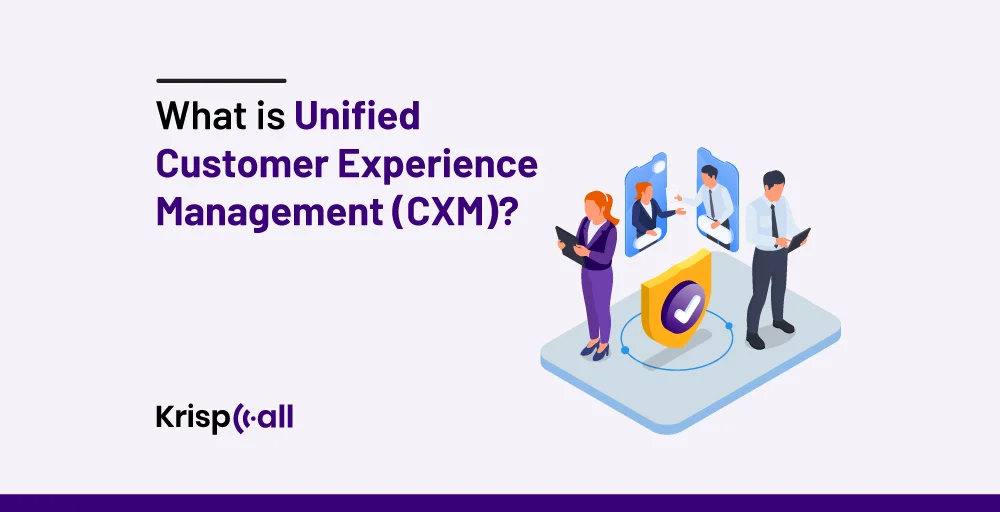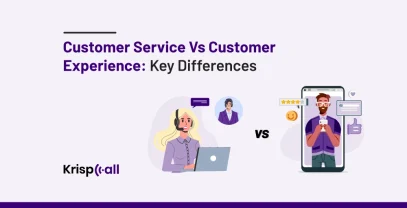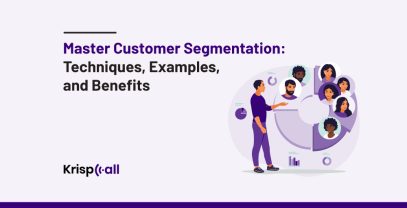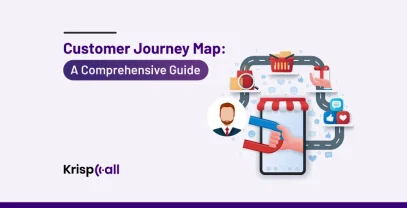Imagine this: You are shopping for a new phone. You look at the brand’s site, talk to someone online, and then go to a store to buy it. However, at the counter, the salesman has no clue about your online purchases. 🤔Confusing, right?
You’re not alone🤝. The number is quite overwhelming: 87% of consumers want a personalized and coherent experience in all shopping channels. This implies that they will expect a seamless journey irrespective of whether they are making purchases on social media, chatting with customer service representatives, or walking into a physical store.
That is where Unified Customer Experience Management, also known as CXM, comes into the picture. It’s about giving consumers an easy and personalized experience, regardless of their chosen channel.
In this blog, we’ll discuss a Unified CXM, its implementation considerations, how it can help businesses, and what challenges it addresses.
🔑 KEY HIGHLIGHTS
- Unified customer experience management merges data from multiple sources to gain insights into customer behavior.
- It maps out customer journeys to optimize touchpoints and interactions.
- Unified CXM streamlines processes and adapts quickly to customer needs and market trends.
- It involves ongoing monitoring and adjustment to enhance the overall customer experience.
What is Unified CXM?
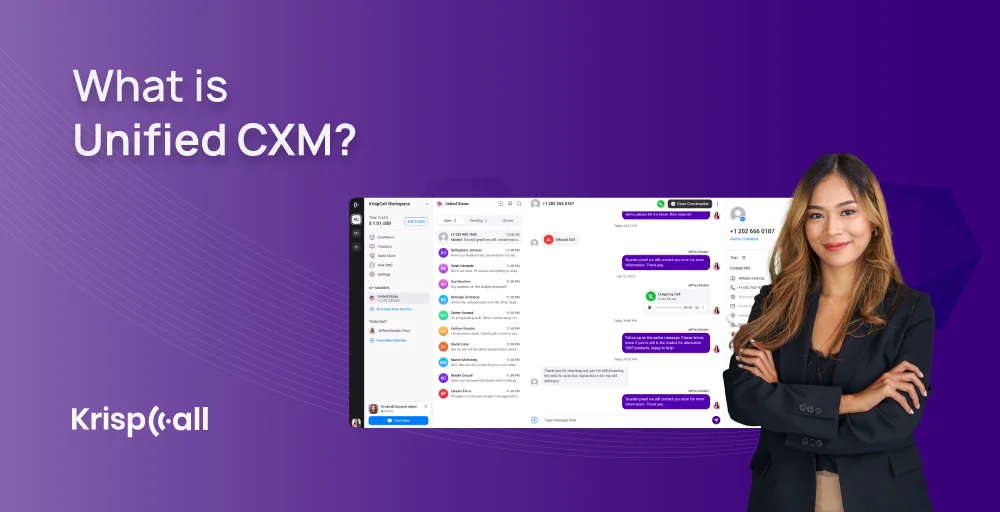
Unified CXM, or Unified Customer Experience Management, is a strategy and technology focusing on a positive customer experience on all channels where customers communicate with a business. These channels are email, phone, social media, and text messages. Unified CXM ensures a consistent and personalized experience across channels and touchpoints.
For example, firms may use different instruments and systems to manage different communication platforms like phone, SMS, and social media. However, the power of Unified customer experiences is that you can unify your communication channels into one page to handle all your interactions through various communication channels in a single view.
With Unified CXM, you can track and analyze customer data in the moment to make your customers happy and provide top-quality customer service. The customer experience and your customers’ data can be used to create target marketing campaigns, increase your sales📈, and build stronger customer relationships.
Key Components of Unified CXM
Understanding the components of Unified CXM is crucial for optimizing customer experiences. Here are some key components of Unified CXM: 👇
Omni-channel Engagement
These days, consumers are not only used to it, but they also prefer to reach out to businesses via their preferred channels📱, such as phone calls, emails, websites, SMS, live chat, or social media. A Unified CXM allows companies to deliver consistent customer support in one portal, saving them time and effort.
Customer Data Integration
This is the foundation of the holistic customer view, which involves gathering customer information from every source, including CRMs, social media, automation tools, web analytics, and customer conversations. The Unified CXM combines all these data and provides a single interface where all contact center agents, such as customer support, marketing, and sales personnel, can access the customer’s history.
Analytics and Insights
Collecting and analyzing customer insights in real-time as they engage with the business helps the company better understand customer behavior, preferences, concerns, and satisfaction levels. This information equips businesses with the necessary tools to keep improving their products and services and, hence, provide tailored customer experiences.
Customer Journey Mapping
This includes all the touchpoints, such as awareness, purchase, post-sale, and even churn. Unified CXM provides visual presentations in the form of graphs or charts that are used to demonstrate customers’ actions and emotions at every stage. This will enable businesses to trace all these elements and take advantage of customers’ pain points to enhance customer service.
How to Implement Unified CXM?
Here are some key points to consider in mind while implementing Unified CXM: 👇
1. Identifying your current CXM strategy
The first step is to assess existing CXM processes, including identifying pain points, gaps, and areas for improvement. This involves customer information, customer feedback, and touchpoints across various channels.
Understanding the customer journey will help you choose the best approach for improving customer experience.
2. Considerations when choosing a unified CXM solution
Your company’s customer experience strategies can only be effective if you choose a suitable unified CXM solution. Identify the components aligned with your business goals, including personalization, automation, analytics, flexibility, reliability, scalability, and ease of use.
3. Integration with existing platforms
Ensuring smooth integration with your current platforms is crucial for a successful Unified CXM setup. Make sure that your CXM solution seamlessly connects with your existing systems like CRM systems, marketing automation, e-commerce, and others.
This integration guarantees that customer data remains synchronized across all channels, facilitating personalized interactions and saving valuable time and resources.
4. Empower teams through training
It will be difficult for employees to adapt to a new system. Hence, it’s necessary to provide them with training and upskilling initiatives to learn and use the new system effectively.
Initiate specialized training based on roles and departments so that each team member understands their responsibilities and the working nature of Unified CXM. This ensures everyone is under the same roof, delivering exceptional customer service.
How does Unified CXM differ from Traditional CXM?
Unified CXM integrates customer data from various channels into a centralized platform, enabling a 360-degree view of the customer journey. At the same time, traditional CXM involves managing interactions separately across channels, which consumes a lot of time and effort.
With that said, let’s go through some of the key differences:
| Unified CXM | Traditional CXM |
| Combines customer conversations from different channels into a single-page. | Manage interactions separately across channels. |
| Provides a holistic view of the customer journey. | Provides fragmented insights across multiple channels. |
| Facilitates personalized interactions based on unified data. | Personalization may be limited due to data silos. |
| Lead to cost savings by consolidating technologies. | May incur higher costs due to maintaining separate systems. |
| Adaptable to changing customer needs, more flexible, and scalable. | Scalability is challenging due to its rigidity and limited adaptability. |
What Challenges does Unified CXM address?
Unified CXM addresses various challenges businesses face in managing customer experiences across multiple channels and touchpoints.
Here are some challenges that Unified CXM addresses: 👇
Fragmented Customer Data
With traditional CXM, customer interaction happens through different channels – phone, SMS, Social Media, and Emails. Because customer data is separated into various systems, it is difficult to view it comprehensively. With Unified CXM, customer data is combined into a single page, eliminating the need to switch between tabs and providing a 360-degree view.
Siloed Departments
The lack of information sharing can lead to a lack of collaboration between departments that manage different aspects of a customer’s journey (Customer support, Marketing, Sales). Unified CXM eliminates these silos, as each department can access customer data with a centralized platform, facilitating effective communication and collaboration between employees and departments.
Limited Visibility
Traditional systems often lack the ability to track customers’ history across several channels. With Unified CXM, you can track the entire customer journey, including awareness, purchases, and challenges. This enables you to identify areas for improvement and deliver personalized experiences.
Measurement and ROI
Without precise data and analytics, measuring the impact of CXM initiatives and ROI will be difficult. Unified CXM offers comprehensive reporting and analysis features that make it easy to measure KPIs and present the value of your CXM efforts.
Why should brands prioritize Unified CXM?
There are several reasons why customer experience management is worth investing in. Here are some reasons why brands should prioritize Unified CXM: 👇
Enhanced Customer Satisfaction
Companies can make their customers happy by giving them personalized and straightforward experiences. The data proves customers are ready to pay 17% extra when the brand offers outstanding customer service.
Brands can more easily connect with customers when considering their needs and preferences. Brands with unified CXM can deliver products and offers that are relevant and consistent with their audience’s needs.
Improved Efficiency and Productivity
Through Unified CXM, organizations can simplify their processes and combine data, increasing efficiency and productivity. The integrated view of how customers interact enables teams to work collaboratively and make informed decisions based on data that will benefit both customers and businesses.
Better Decision Making
Unified CXM offers a comprehensive view of the customer journey, which helps brands make more informed decisions about customer service, sales, and marketing.
Consequently, this allows them to identify the customer experience and enhance their interactions. It also assists them in discovering customers’ pain points, allowing them to develop more effective solutions.
Increased Revenue
Unified CXM helps brands deliver a seamless, consistent, personalized customer experience across all touchpoints. This results in higher customer loyalty, satisfaction, and lifetime value, which leads to an increase in revenue. Research has shown that companies with superior CX will likely see a 2 to 7 percent rise in revenue figures.
KrispCall Approach to Unified CXM
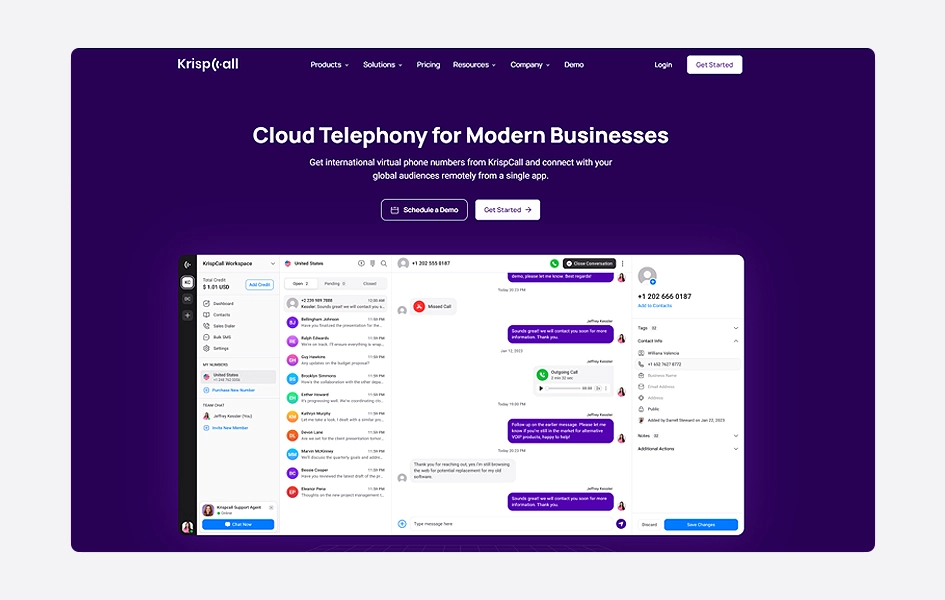
KrispCall significantly tracks customer interactions in real time. That allows you to better understand your customers and deliver personalized customer interactions, leading to increased loyal customers, better reputation, and more revenue.
KrispCall provides an efficient customer experience management system that allows your business to provide quality service to clients. The latest technologies, such as IVR, comprehensive call analytics, smooth click-to-call functionality, and KrispCall’s robust VoIP phone system, help you provide a customized and effective customer experience through every touchpoint.
Some of the approaches to make better Unified CXM are:
Multi-channel support
KrispCall provides a centralized hub for all communication channels, including voice calls, SMS, and email. This hub is a central point of contact for customers to contact the business.
Self-service options
KrispCall offers self-service options like Interactive Voice Response (IVR) integrated into its system. IVR allows customers to solve their inquiries on their own and perform basic tasks such as tracking orders or making reservations without the need for a live agent.
Review Monitoring
With KrispCall review monitoring capabilities, you can analyze reviews in real-time, promptly respond to customers’ feedback, address concerns, and leverage positive feedback. Additionally, monitoring reviews provides agents with a complete view of customer preferences and sentiments, enabling them to tailor their interactions accordingly and further improve the overall customer experience.
Analytics and Insights
KrispCall provides valuable insights into customer behavior, preferences, and satisfaction levels, allowing businesses to optimize their CXM strategies continuously. This data can also be used to identify areas for improvement and develop targeted marketing strategies.
Final Words
Nowadays, with different channels through which customers meet a brand, customers expect a continuous and united experience that follows them throughout all interactions with the brand. Unified Customer Experience Management (CXM) aims to ensure that customer data is centralized and accessible to all departments simultaneously.
Also, since it allows for personalized and consistent interactions on any channel, it allows for a better customer experience. Thus, you will have satisfied customers and involvement, and in the end, you will have increased income.
FAQs
What is Customer Experience Management (CXM)?
Customer experience Management(CXM) is a strategy for better-understanding customers and improving their overall experience, including satisfaction, loyalty, and engagement.
Why is CXM important for business?
CXM is important for businesses as it helps them understand their customers better, increases customer engagement and brand loyalty, and customer lifetime value drives revenue.
What are the Best Practices in CXM?
The best practices in CXM include empathy, transparency, personalization, listening, and understanding customers.
What is the difference between CRM & CXM?
Customer relationship management (CRM) is concerned with managing customer interactions, sales, and relationships. With it, businesses can improve sales efficiency, lead conversion, and customer retention. CXM, on the other hand, aims to increase customer satisfaction and the overall experience. Businesses can use it to gain a better understanding of how their brands are perceived by their customers.
What are the advantages of Unified CXM?
The advantages of Unified UCX are that it can increase customer satisfaction and loyalty, improve efficiency and productivity, provide better insights into customer behavior and preferences, and increase revenue and profitability.

